
Filter News
Area of Research
- Advanced Manufacturing (2)
- Biology and Environment (8)
- Computational Engineering (1)
- Computer Science (10)
- Energy Science (64)
- Energy Sciences (1)
- Fusion Energy (2)
- Materials (53)
- Materials for Computing (4)
- National Security (12)
- Neutron Science (61)
- Nuclear Science and Technology (9)
- Quantum information Science (6)
- Sensors and Controls (1)
- Supercomputing (63)
- Transportation Systems (1)
News Topics
- (-) Artificial Intelligence (21)
- (-) Biotechnology (3)
- (-) Computer Science (90)
- (-) Cybersecurity (12)
- (-) Energy Storage (31)
- (-) Microscopy (18)
- (-) Molten Salt (7)
- (-) Neutron Science (66)
- (-) Security (12)
- (-) Transportation (34)
- 3-D Printing/Advanced Manufacturing (49)
- Advanced Reactors (22)
- Big Data (19)
- Bioenergy (25)
- Biology (6)
- Biomedical (32)
- Buildings (1)
- Chemical Sciences (5)
- Clean Water (8)
- Composites (6)
- Coronavirus (25)
- Critical Materials (6)
- Environment (54)
- Exascale Computing (6)
- Frontier (3)
- Fusion (22)
- Grid (15)
- High-Performance Computing (3)
- Isotopes (15)
- Machine Learning (13)
- Materials (2)
- Materials Science (67)
- Mathematics (2)
- Mercury (5)
- Nanotechnology (32)
- National Security (2)
- Nuclear Energy (58)
- Physics (28)
- Polymers (14)
- Quantum Science (27)
- Space Exploration (8)
- Summit (28)
Media Contacts

Geoffrey L. Greene, a professor at the University of Tennessee, Knoxville, who holds a joint appointment with ORNL, will be awarded the 2021 Tom Bonner Prize for Nuclear Physics from the American Physical Society.

Led by ORNL and the University of Tennessee, Knoxville, a study of a solar-energy material with a bright future revealed a way to slow phonons, the waves that transport heat.
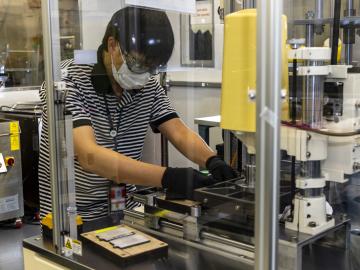
Soteria Battery Innovation Group has exclusively licensed and optioned a technology developed by Oak Ridge National Laboratory designed to eliminate thermal runaway in lithium ion batteries due to mechanical damage.

Four research teams from the Department of Energy’s Oak Ridge National Laboratory and their technologies have received 2020 R&D 100 Awards.
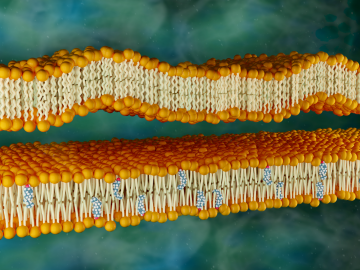
Neutron scattering at ORNL has shown that cholesterol stiffens simple lipid membranes, a finding that may help us better understand the functioning of human cells.
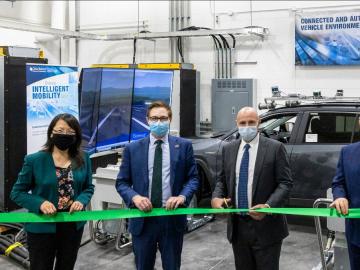
ORNL and Department of Energy officials dedicated the launch of two clean energy research initiatives that focus on the recycling and recovery of advanced manufacturing materials and on connected and
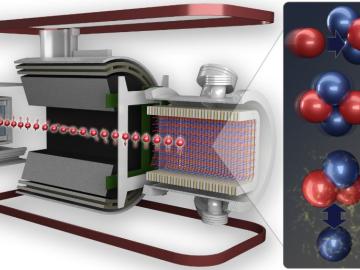
Through a one-of-a-kind experiment at ORNL, nuclear physicists have precisely measured the weak interaction between protons and neutrons. The result quantifies the weak force theory as predicted by the Standard Model of Particle Physics.
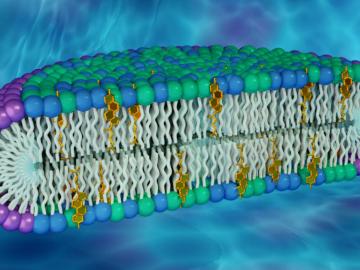
A team of researchers led by Vanderbilt University has recently shed light on how membrane proteins could be influenced by the lipids around them. By developing a novel type of membrane model, the scientists were able to show that the shape and behavior of a protein can be altered by exposure to different lipid compositions.

Scientists at Oak Ridge National Laboratory used new techniques to create a composite that increases the electrical current capacity of copper wires, providing a new material that can be scaled for use in ultra-efficient, power-dense electric vehicle traction motors.

Scientists at ORNL and the University of Nebraska have developed an easier way to generate electrons for nanoscale imaging and sensing, providing a useful new tool for material science, bioimaging and fundamental quantum research.


